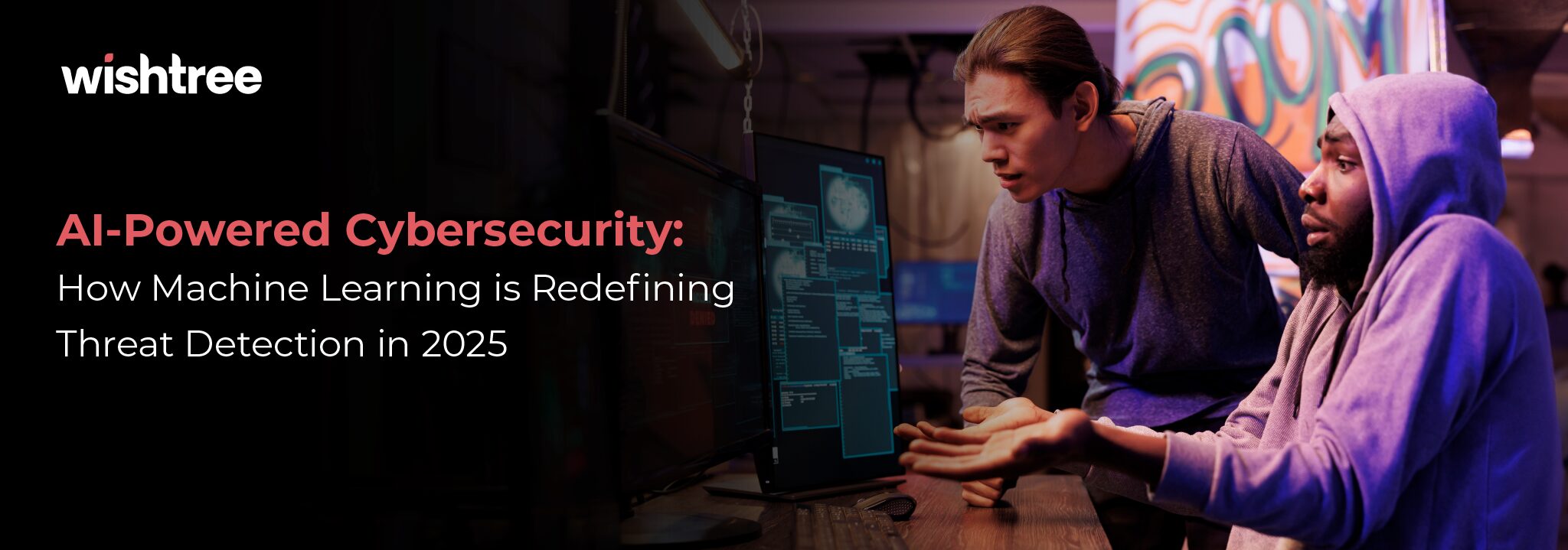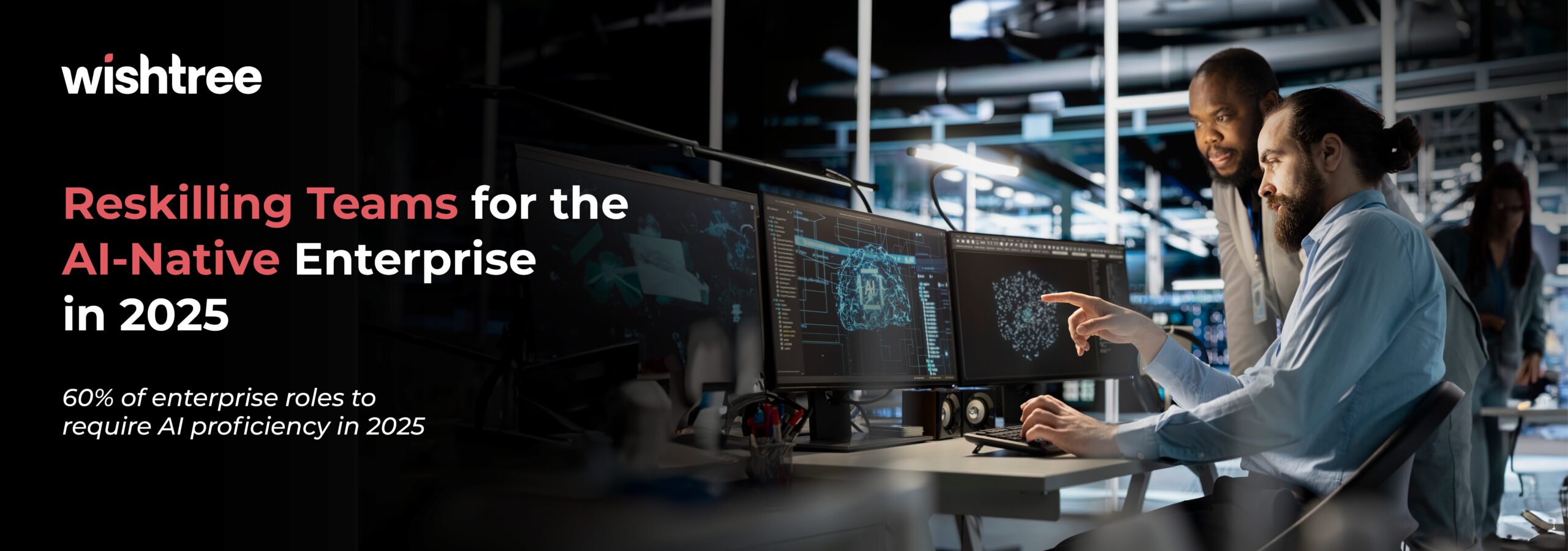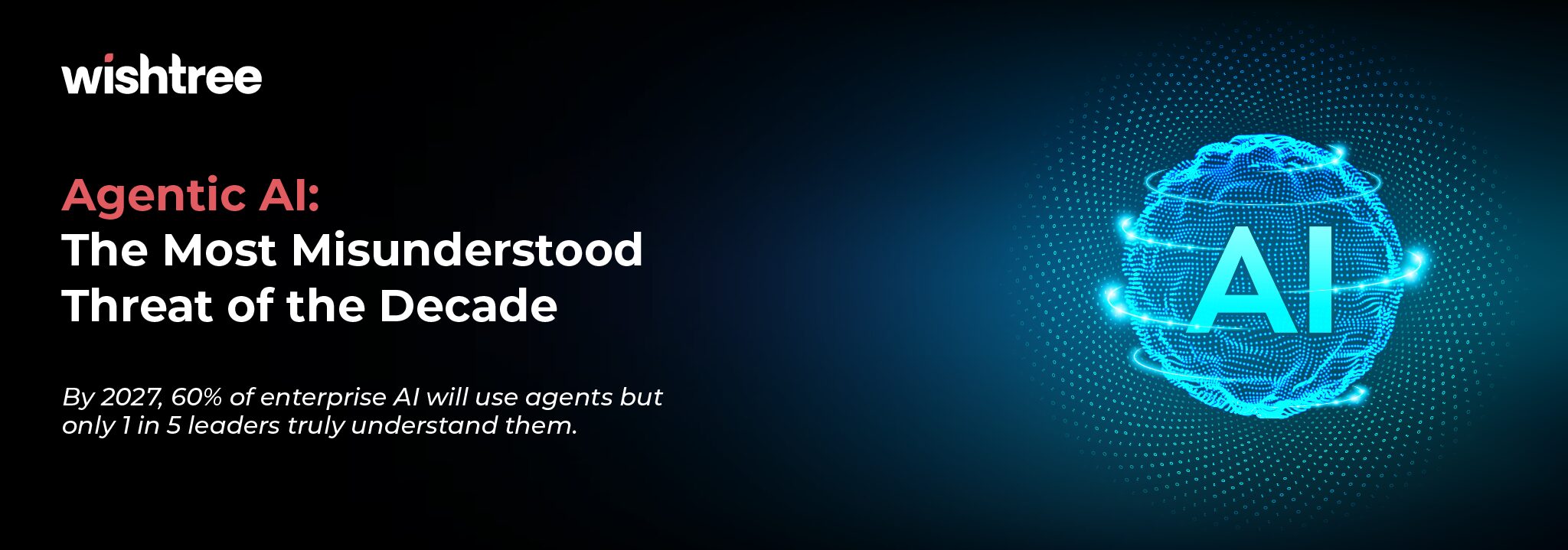Table of Contents
Introduction
In 2025, AI isn’t just a tool, it’s the backbone of enterprise operations. The rapid pace of innovation, however, presents us with a critical challenge: how do you build an 2025 AI Stack that’s not only scalable and secure but also future-proof and genuinely ahead of the curve?
At Wishtree Technologies, we understand that navigating this complex landscape requires more than just adopting the latest buzzwords. It demands a strategic, holistic approach to integrating cutting-edge technologies with your core business objectives.
From the rise of autonomous AI agents capable of making decisions and executing tasks independently, to the imperative of sovereign cloud models addressing stringent data residency laws, we break down the must-have components of a winning AI strategy for the modern enterprise.
Join us as we unveil the foundational shifts, infrastructure essentials, orchestration mechanisms, and application layers that define the indispensable AI toolkit of 2025.
The Foundational Layer: Models & Development
What’s Changed Since 2024?
- Small Language Models (SLMs) dominate niche tasks: In a significant shift from before, highly specialized SLMs like Microsoft’s Phi-5 and Mistral 12B have emerged as powerful, cost-effective alternatives to massive, general-purpose Large Language Models (LLMs). These nimble models excel at specific enterprise functions, drastically reducing inference costs and computational overhead.
- Multimodal AI is now standard: The days of processing data in isolated silos are over. Enterprises are now routinely integrating text, video, audio, and IoT sensor data into unified AI pipelines. This multimodal capability unlocks richer insights and more sophisticated automation across diverse operations.
- Open-weight models compete with closed APIs: The landscape for AI model access has diversified. Open-weight models, such as Meta’s Llama-4, are increasingly challenging proprietary, closed APIs like GPT-5. This competition forces vendors to offer hybrid deployment options, allowing enterprises greater flexibility and control over their AI assets.
Wishtree’s Take:
Enterprises no longer ‘pick a model’—they build adaptive ensembles. A customer service bot, for instance, might leverage GPT-5 for creative problem-solving and nuanced responses, but then switch to a fine-tuned SLM for compliance-heavy interactions or to access sensitive internal knowledge bases, ensuring accuracy and regulatory adherence.
The Infrastructure Layer: Where AI Runs
Key 2025 Trends:
- Sovereign AI Clouds: Driven by stricter regulations like GDPR 2.0 and evolving data localization laws, European and Asian firms are increasingly adopting on-premise or national AI clouds (e.g., NVIDIA’s DGX Sovereign). This ensures data residency and control over sensitive AI workloads.
- Edge AI Explodes: The demand for real-time processing has pushed AI capabilities closer to the source of data. Factories and retailers are deploying real-time vision models directly on devices like Nvidia’s Jetson Orin, dramatically cutting latency and enabling instantaneous decision-making.
- AI-Optimized Silicon: Specialized custom chips, such as Cerebras’ Wafer-Scale-3 and Groq’s LPUs, are no longer niche. They are slashing inference costs by an impressive 40% compared to 2024, making advanced AI applications more economically viable at scale.
Case Study:
A Wishtree manufacturing client reduced defect detection time by 90% by moving from cloud-based computer vision to on-device edge AI, demonstrating the tangible benefits of localized processing.
The Orchestration Layer: Making AI Work Together
2025’s Must-Have Tools:
Category | 2024 Standard | 2025 Evolution |
| Workflow Automation | Zapier + LangChain | AI Agent Orchestrators (e.g., AutoGen Studio) |
| MLOps | MLflow, Kubeflow | AIOps 2.0 (self-healing pipelines) |
| Governance | Manual audits | AI-Native Governance (e.g., IBM watsonx.governance) |
Pro Tip:
Enterprises now demand ‘observable AI’—every decision made by an AI system must be traceable back to its training data, decision logic, and relevant regulations, ensuring transparency and accountability.
The Application Layer: AI That Employees Actually Use
Top 2025 Adoption Drivers:
- AI Copilots evolve into AI Teammates: The next generation of AI copilots are no longer just assistants; they are becoming autonomous AI teammates. For example, Salesforce’s “Einstein Agents” are now capable of closing deals autonomously, handling entire customer journeys from lead qualification to contract generation.
- Voice-First Interfaces: The proliferation of efficient on-device models like Gemini Nano 2 on Android means field workers can now query complex AI systems via natural, spoken conversation, boosting productivity and accessibility in dynamic environments.
- Generative BI: Business intelligence tools are transforming. Generative BI capabilities, exemplified by PowerBI Copilot, allow users to simply ask questions like “Show me Q3 trends for the Northeast region,” and the AI will generate interactive dashboards and visualizations on the fly.
Wishtree’s Prediction:
By 2026, 30% of enterprise software will be AI-native—designed from the ground up for interactions with AI agents, rather than exclusively for human users, marking a fundamental shift in software architecture.
Future-Proofing Your Stack: A 2025 Checklist
- Prioritize interoperability: To avoid vendor lock-in and maintain flexibility, focus on solutions that support open standards and integrate seamlessly with open-weight models.
- Budget for inference costs: Strategic deployment of SLMs and edge AI can lead to significant savings—up to 60% compared to reliance solely on cloud-based LLMs. Plan your budget with these efficiencies in mind.
- Plan for AI sovereignty: Data residency laws are expanding to include model weights and training data. Ensure your AI infrastructure complies with local and international regulations to avoid future legal complexities.
- Upskill teams on prompt engineering for agents, not just chatbots: As AI agents become more autonomous, the ability to effectively design and refine their goals, constraints, and operational parameters through advanced prompt engineering will be a critical skill.
2025 AI Vendor Showdown: Key Players Compared
Vendor | Strengths | Weaknesses | Best For | Wishtree’s Verdict |
| NVIDIA | – DGX Sovereign Cloud – Omniverse for 3D AI and digital twins – Best-in-class GPUs and accelerators for demanding workloads – Comprehensive software ecosystem (CUDA, TensorRT) | – High upfront cost for hardware and specialized infrastructure – Steep learning curve for maximizing performance – Less emphasis on general-purpose cloud services | Manufacturing, Healthcare Imaging, Automotive, Research | The gold standard for GPU-heavy workloads and real-time simulations, but can be overkill for pure NLP applications or those with limited data processing needs. |
| Microsoft | – Phi-5 SLMs for efficient, targeted tasks – Azure AI Agents and Copilots deeply integrated with Office 365 – Strong enterprise support and existing customer base – Extensive MLOps tools within Azure | – Limited open-source options compared to other platforms – Potential compliance hurdles in highly regulated EU sectors despite efforts – Vendor lock-in risk for tightly integrated services | Financial Services, Government, Large Enterprises already on Azure | Unbeatable for enterprises deeply married to the Microsoft stack, offering seamless integration and a familiar ecosystem for rapid adoption. |
| AWS | – Bedrock with diverse foundation models (Claude 4, Llama) – SageMaker HyperPod for scalable model training – Unparalleled global infrastructure and vast service portfolio – Flexible pricing models and broad partner ecosystem | – Data sovereignty concerns for highly sensitive workloads outside US regions – Can be complex to navigate the sheer volume of services – Pricing can become complex with extensive usage | Retail, Media & Entertainment, Startups, Web-scale applications | The safe and scalable choice for almost any AI initiative, but always double-check local data residency laws and carefully manage your cloud spend. |
| Open-Source (Mistral/Llama) | – Full model control and transparency – Zero API costs for inference (after initial setup) – High degree of custom fine-tuning and proprietary data integration – Thriving community support and rapid innovation | – Requires significant internal ML expertise and infrastructure management – Higher security and governance overhead to manage – No direct vendor support for issues or bugs | Tech-first companies, Startups, Companies with strong in-house IT and ML teams | Our top pick for cost-sensitive innovators and those requiring ultimate flexibility and control, provided they have robust IT capabilities. |
| IBM | – watsonx.governance for AI compliance and explainability – Focus on Quantum-safe AI for future security – Tailored solutions and regulated industry templates – Strong heritage in enterprise data and analytics | – Perceived slower innovation cycle compared to cloud-native hyperscalers – Legacy perceptions may hinder adoption among newer enterprises – Ecosystem not as broad as AWS or Azure | Banking, Pharmaceuticals, Defense, Highly Regulated Industries | The compliance leader for high-risk industries, offering robust governance and a strong focus on trust and accountability in AI. |
Pro Tip:
Most enterprises now adopt a hybrid strategy—e.g., leveraging AWS for scalable, general-purpose workloads, combined with open-source models for sensitive or highly specialized tasks where control and cost-efficiency are paramount.
Industry Spotlight: AI Stacks in Action
Healthcare 2025: The Compliance-First Stack
The healthcare industry is experiencing a revolution driven by AI, with a paramount focus on patient safety and data privacy.
Emerging Trend: AI Hospitalists – Autonomous AI agents are being developed to continuously monitor electronic health records (EHRs), analyze patient data, and proactively flag potential treatment risks, adverse drug interactions, or deteriorating conditions, thereby augmenting clinical decision-making.
Wishtree Case Study:
Reduced radiology report errors by 45% for a leading hospital network by implementing:
- Models: HIPAA-tuned Hippocratic AI models for secure conversational AI, integrated with NVIDIA MONAI for advanced medical imaging analysis and segmentation.
- Infra: A hybrid cloud infrastructure, utilizing AWS for scalable research workloads and de-identified data processing, combined with secure, on-premise sovereign clouds for sensitive patient data storage and model inference.
- Governance: IBM watsonx.governance was deployed to provide comprehensive audit trails for every AI-driven diagnostic suggestion and treatment recommendation, ensuring full traceability and compliance with healthcare regulations.
Retail 2025: The Hyper-Personalization Stack
The retail sector is leveraging AI to create seamless, highly personalized customer experiences, both online and in physical stores.
Must-Have Tools:
- GenAI Product Descriptions: Leveraging advanced models like GPT-5, fine-tuned with specific brand voice guidelines, to automatically generate engaging, SEO-optimized product descriptions and marketing copy at scale.
- Vision AI Checkout: Implementing cashierless store technologies powered by BrainChip’s neuromorphic chips, enabling ultra-low latency, real-time object recognition for frictionless shopping experiences.
- Dynamic Pricing Agents: Utilizing AWS SageMaker and real-time competitor data feeds to deploy AI agents that dynamically adjust product pricing based on demand, inventory, and market conditions, maximizing revenue and competitiveness.
Pro Tip:
2025’s retail winners are using AI to seamlessly blend online and offline experiences – for example, smart fitting rooms that suggest personalized outfits via augmented reality (AR) based on customer preferences and inventory.
Manufacturing 2025: The Hyper-Efficient Production Stack
Manufacturing is leveraging AI for unprecedented levels of automation, quality control, and supply chain optimization.
Must-Have Tools:
- Models: NVIDIA’s Omniverse for creating and simulating highly accurate digital twins of factory floors and production lines, coupled with specialized SLMs for real-time supply chain forecasting and anomaly detection.
- Infra: Robust factory-floor edge servers (e.g., solutions from Siemens in partnership with Qualcomm) capable of running real-time vision AI for quality inspection, predictive maintenance, and robotic control directly at the point of action.
- App: Self-optimizing production line agents that use reinforcement learning to dynamically adjust machinery parameters, minimize waste, and maximize throughput without human intervention.
Pro Tip:
2025’s manufacturing winners are leveraging AI to create truly adaptive factories, where every machine and process is interconnected and intelligently optimized in real-time, moving beyond mere automation to autonomous production.
Financial Services 2025: The Zero-Trust AI Stack
In an industry where trust and security are paramount, financial services are adopting AI with a zero-trust mindset, ensuring every transaction and decision is verifiable and compliant.
Key Components:
Layer | Technology | Why It Matters |
| Data | Homomorphic encryption | Allows AI models to analyze sensitive financial data without ever decrypting it, ensuring ultimate privacy and security. |
| Models | BloombergGPT-3 + Quantum Reinforcement Learning (RL) | Combining domain-specific LLMs with quantum-resistant algorithms for unhackable trading algorithms and fraud detection. |
| Audit | Chainalysis for AI transactions | Applying blockchain analytics tools to AI-driven financial transactions to provide immutable, transparent audit trails. |
Interactive Bonus: “Which 2025 AI Vendor Fits Your Enterprise?”
Question 1: Your top AI priority for the next 12-18 months is:
- [ ] Cost efficiency and reducing operational expenditure
- [ ] Regulatory compliance, data sovereignty, and security
- [ ] Cutting-edge innovation and pushing technological boundaries
- [ ] Ease of integration with existing systems and rapid deployment
Question 2: The nature of your most critical data is mostly:
- [ ] Public or low-risk, readily available for cloud processing
- [ ] Highly sensitive (e.g., PII, healthcare records, financial transactions)
- [ ] Geographically restricted by national or regional data residency laws
- [ ] Generated at the edge, on devices, or in remote locations
Question 3: Your internal team’s AI skills and infrastructure capabilities are:
- [ ] Limited; we need turnkey solutions and significant vendor support
- [ ] Specialized; we have strong ML engineers capable of fine-tuning models and managing infrastructure
- [ ] Growing; we are comfortable partnering and leveraging managed services
Results:
- If you chose mostly A’s: You likely need a balanced approach. Consider a combination like “AWS Bedrock + Microsoft Phi-5” for robust cloud capabilities and efficient SLMs.
- If you chose mostly B’s or C’s: Your focus is on control and compliance. “Mistral 12B + Sovereign Cloud” or a solution from IBM could be ideal for regulated industries.
- If you chose mostly C’s or D’s for Q2: You’re at the forefront of innovation. “NVIDIA Edge AI + Open-Source SLMs” might be perfect for IoT, manufacturing, or deep tech initiatives.
Conclusion
The 2025 AI stack is modular, sovereign, and decisively agent-centric. It’s no longer about deploying isolated AI applications but architecting a cohesive, intelligent ecosystem. Whether you’re:
- A bank needing auditable AI for risk assessment and compliance,
- A manufacturer building self-healing factories and optimizing supply chains, or
- A retailer deploying voice-first shopping agents and hyper-personalized experiences,
…your AI toolkit must expertly balance cutting-edge innovation with an unwavering commitment to compliance, security, and measurable ROI.
At Wishtree Technologies, we don’t just talk about the future of AI; we help enterprises deploy the right stack to achieve true scalability, maintain stringent compliance, and realize tangible returns on investment.
Ready to architect your enterprise’s AI future? Contact us today!



